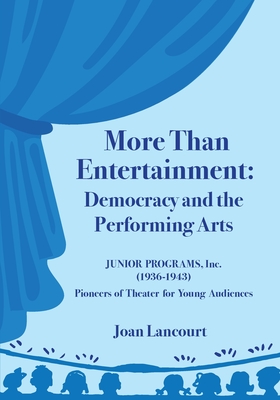More Than Entertainment: Democracy and the Performing Arts

More Than Entertainment: Democracy and the Performing Arts
One of the first professional national touring companies to focus exclusively on productions for children, Junior Programs (1936-1943) believed that the performing arts had more than entertainment to offer a democratic society. Their leaders were bold, iconoclastic thinkers who used innovative drama, dance, and opera productions to infuse the performing arts into the everyday life of the communities in which they performed, as well as into the entire K-12 local school curriculums.
Inspired by the nation's egalitarian aspirations, and without a pre-existing road map, they commissioned lively stories of marginalized communities as well as traditional classics. In the process, they introduced four million children to the cultural richness of the racial, ethnic, economic, and religious diversity inherent in a nation of immigrants.
With strong local school and community partnerships, their unique model combined artistic and educational innovations, enabling them to repeatedly turn challenges into opportunities. As important, their years of nationwide success have left a legacy of guiding principles that current TYA practitioners and educators can use to address the challenges they face today.
PRP: 232.42 Lei
Acesta este Prețul Recomandat de Producător. Prețul de vânzare al produsului este afișat mai jos.
209.18Lei
209.18Lei
232.42 LeiLivrare in 2-4 saptamani
Descrierea produsului
One of the first professional national touring companies to focus exclusively on productions for children, Junior Programs (1936-1943) believed that the performing arts had more than entertainment to offer a democratic society. Their leaders were bold, iconoclastic thinkers who used innovative drama, dance, and opera productions to infuse the performing arts into the everyday life of the communities in which they performed, as well as into the entire K-12 local school curriculums.
Inspired by the nation's egalitarian aspirations, and without a pre-existing road map, they commissioned lively stories of marginalized communities as well as traditional classics. In the process, they introduced four million children to the cultural richness of the racial, ethnic, economic, and religious diversity inherent in a nation of immigrants.
With strong local school and community partnerships, their unique model combined artistic and educational innovations, enabling them to repeatedly turn challenges into opportunities. As important, their years of nationwide success have left a legacy of guiding principles that current TYA practitioners and educators can use to address the challenges they face today.
Detaliile produsului










